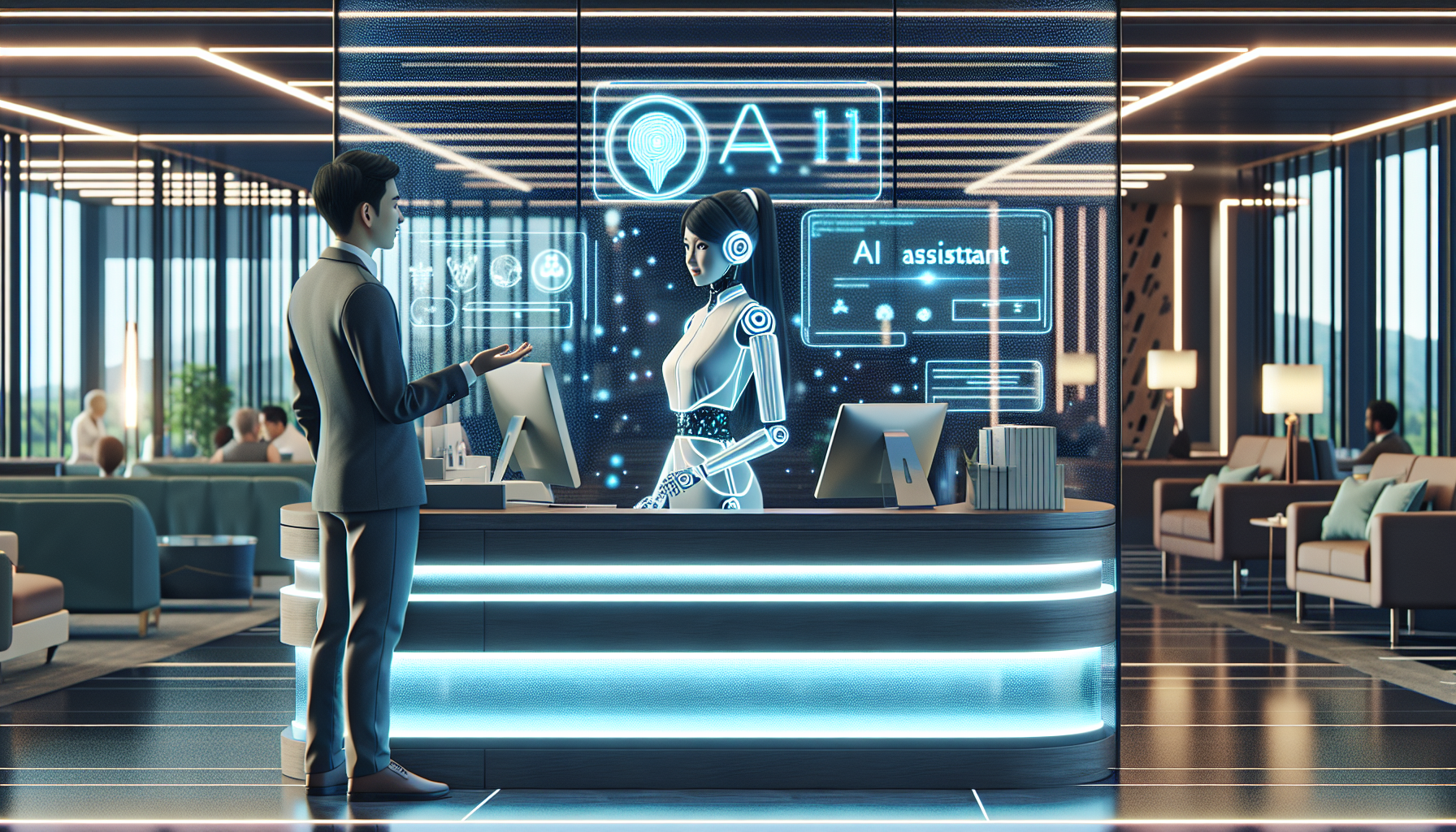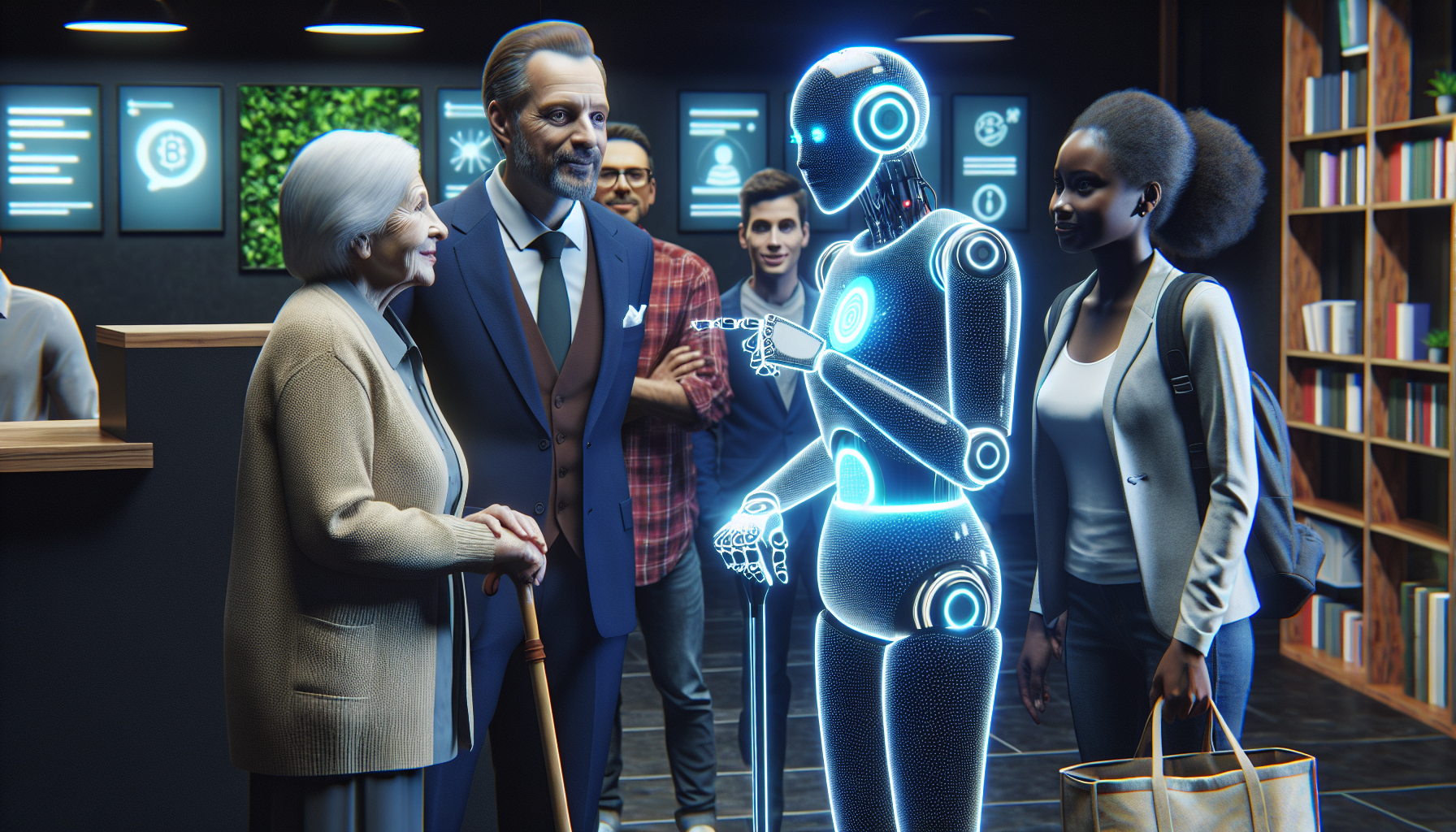
In the rapidly expanding field of telecommunications, the importance of customer service quality cannot be overstated. One of the key advancements that is revolutionizing the sector is the development and integration of Artificial Intelligence Receptionists. These tools are shaping the future of customer service in telecommunications in unprecedented ways.AI Receptionists come with numerous benefits compared to their human counterparts, offering improved customer service experiences and operational efficiencies, notably in cost and time savings.

An AI receptionist or virtual assistant is a computer program designed to simulate conversation with human users, especially over the phone. They are designed to manage tasks such as meeting scheduling, email triaging, and query handling, simulating human interaction in a way that feels comfortable and natural to the customer. They can be deployed to operate 24/7, handle high call volumes, and deliver an impeccable consumer experience, thus significantly improving the service quality in the telecom sector.
In order to be effective, an AI receptionist must possess certain capabilities. It should be capable of understanding and identifying user intent from natural language input. Moreover, it must be programmed to learn from previous interactions to improve future responses and increase knowledge over time. Most importantly, it should be able to simulate empathy and maintain interpersonal cordiality, often a challenging aspect of AI. These are abilities amplified by high-quality machine learning algorithms and the ability to process Natural Language Processing (NLP).
The general setup for an AI receptionist involves incorporating both the latest hardware and the best AI virtual assistant software, and integrating it seamlessly into the existing telecom infrastructure. Telecommunications companies are increasingly leveraging these virtual assistant solutions and using strategic partnerships with technology providers to enhance the capabilities of their AI receptionists. These partnerships allow the telecommunications companies to reap the benefits of advanced AI, while delivering more satisfactory and efficient services to their customers.
One of the most significant advancements in the telecommunications industry is the advent of AI Receptionists. Driven by cutting-edge technology, these simulated human interactions are packed with features that augment your business operations and improve service quality. Offering 24/7 availability, unleashing multilingual support, and providing seamless integration with CRM systems and other business tools only scratch the surface of what AI receptionists can do.
Arguably, the most salient feature of an AI receptionist is its 24/7 availability. Unlike their human counterparts, AI receptionists don't need breaks or leaves, ensuring your customers receive assistance at all times. This around-the-clock service eliminates waiting periods and significantly enhances customer satisfaction. Click here to learn more about how 24/7 availability can elevate your customer service.
Secondly, AI receptionists boast of multilingual support, an essential feature in today's globalised business environment. With the ability to interact in multiple languages, AI receptionists ensure businesses can cross linguistic barriers and cater to a broader customer base. More about multilingual AI retrieved here.
Lastly, these AI systems offer seamless integration with Customer Relationship Management (CRM) systems and other critical business tools. This integration allows businesses to streamline operations, improve efficiency, and personalize customer interactions. AI receptionists automatically update CRM platforms with customer interactions, reducing manual data entry and ensuring that customer data is always current. Discover the advantages of AI and CRM integration in this article.
In conclusion, the advent of AI Receptionists in the telecommunications industry has elevated service quality to unprecedented levels. From providing 24/7 customer support to managing customer interactions in different languages, and integrating seamlessly with business tools, AI receptionists offer a host of features that can revolutionize how your business operates and engages with customers. As AI technology continues to advance, we can expect AI receptionists to possess even more outstanding features that will further enhance service quality.
Let's delve into how real-world applications of AI receptionists in telecommunications are significantly improving service quality and driving customer satisfaction to new heights.
The first compelling case is of Orange Group, a leading telecommunicator with operations globally. They integrated their system with an AI-driven virtual assistant, ‘Djingo’, to offer value-added services like billing information, contract details and more. Further, Djingo was programmed to learn from each interaction, making the service even more personalized over time. The impact? A surge in customer satisfaction ratings, reduction in call-handling times and significant savings on manpower.

Next up is Vodafone UK's application of their AI receptionist, 'TOBi'. TOBi now manages over 90% of the company's online chat interactions, resolving more than 70% of customer inquiries without any human intervention. The result of this AI implementation has been higher customer satisfaction rates, shorter resolution times, and increased profit margins for Vodafone.
Another telecom giant Verizon also hopped on the AI bandwagon with their virtual assistant 'Verizon Mix and Match'. Its integration has led to an increase in self-service rates amongst their users, thereby reducing waiting times, improving customer service, and enhancing user experience.
To sum up, these case studies of AI receptionists portray a clear picture of their transformative potential in the telecommunications industry. By leveraging AI, companies are now able to deliver timely, personalized and efficient service, all the while boosting their bottom-line. The future sure looks brighter with AI receptionists in telecommunications.
```As the telecommunications industry continues to navigate through the ever-changing business landscape, AI receptionists have emerged to present game-changing solutions. Revolutionizing how telecommunications firms operate, AI receptionists are improving service quality significantly. This transformation is largely attributed to their ability to streamline operations, increase efficiency, and greatly bolster customer interaction.
AI-based receptionists effectively streamline operations by automating routine tasks such as handling customer inquiries and directing phone calls. This technology uses advanced algorithms to understand and respond to customer needs swiftly, eliminating unnecessary waiting times. The increased speed and accuracy of these operations not only improve the customer experience but also free up human staff to focus on more complex tasks.
In addition, AI receptionists play a substantial role in increasing efficiency in telecommunications firms. The integration of machine learning and natural language processing capabilities allows the AI to learn and adapt over time, leading to improved efficiency in managing customer interactions. Consistently gaining insights from their interactions, AI receptionists continue to grow smarter, developing a deeper understanding of customer needs and consequently providing more accurate responses.
The scalability of customer interaction is another salient feature of the AI receptionist's advantageous impact. Traditional human receptionists are limited by capacity and working hours; in contrast, AI receptionists like those offered by RingCentral Office can handle tens of thousands of interactions simultaneously and operate round the clock. This robust scalability means that large telecommunications firms can effectively manage their continuously growing customer base without compromising on service quality.
In conclusion, the inclusion of AI receptionists in telecommunications firms is proving to be fundamental in improving service quality. By streamlining operations, increasing efficiency, and scaling customer interaction, these AI-powered systems are making remarkable strides in enhancing the overall business process and customer experience of the telecommunications industry.
The evolution of AI Receptionists within the telecommunications industry is not only a trend but also a necessity in the near future. As increasing numbers of businesses prioritize service quality, it's no surprise that AI-powered solutions are gaining momentum. Here, we will take a glance at the potential future of AI receptionists and how they might evolve to redefine service quality.

Tech pundits forecast that AI will integrate deeper into the telecommunications industry, significantly influencing the receptionist role. We're likely to witness smarter AI Receptionists that go beyond managing incoming calls to offering personalized customer services based on individual caller data and behavior.
Moreover, there will be an increasing trend towards the integration of AI Receptionists with other intelligent systems such as Customer Data Platforms (CDPs) and Customer Relationship Management (CRM) software. This evolution will allow businesses to leverage comprehensive customer data, resulting in highly personalized and intuitive customer interactions.
In addition, advances in Natural Language Processing (NLP) and Machine Learning (ML) will elevate the capabilities of AI receptionists. Predictive analytics and sentiment analysis drawn from these technological advancements will enable AI receptionists to understand and predict customer needs even before they voice them, thereby significantly raising the bar for service quality.
In conclusion, the future seems promising for AI receptionists in the telecommunications industry. As the technology evolves and integrates more tightly with other systems, these AI-powered helpers will not only improve service quality but also redefine customer interaction.
The prospect of leveraging AI receptionists in the telecommunications industry brings immense promise and potential for significant service quality improvements. However, it also presents numerous challenges and considerations, particularly around the realms of privacy concerns and the necessity for continuous learning and adaptation.
The adoption of AI receptionists exposes a series of privacy considerations. Customers usually provide personal details while communicating with receptionists. With AI receptionists, there's a possibility that these sensitive details might be inadequately protected or misused, hence raising serious privacy concerns. Institutions might need to review their data protection and privacy policies regularly, examining the methods employed to secure data collection, storage, and processing. The General Data Protection Regulation (GDPR) is a robust framework that organizations can adopt to guide their privacy efforts.
Furthermore, AI receptionists require continuous learning and adaptation. Unlike human receptionists who are adaptable and can readily respond to unpredictable queries, AI receptionists may fall short if they encounter the unfamiliar. As such, there's a need for constant testing, AI model tweaking, and training to understand various accents, languages, and intricate speech nuances.
Companies should involve all relevant stakeholders, from the IT department to the customer service teams, employees, and, of course, the customers themselves. Gathering feedback on the performance of the AI receptionist and taking into consideration users’ needs and preferences will enable its evolution to be tailored and geared towards optimal user experience.
The path to successful adoption and maximal usage of AI receptionists involves balancing the act of ensuring the protection of customer data while continuously updating AI capabilities. These considerations, though challenging, are integral to leveraging the potential of AI in enhancing service quality, creating more value in the telecommunications industry.
Start your free trial for My AI Front Desk today, it takes minutes to setup!








